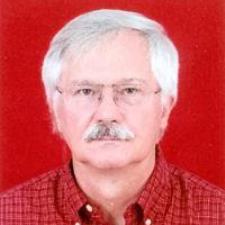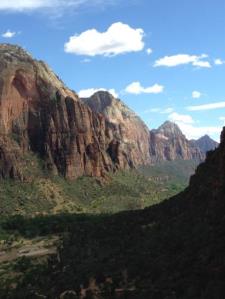
Gerald E. answered • 09/23/17
Tutor
New to Wyzant
Patient Spanish-speaking former geosciences professor
Basal Subduction Erosion and the Formation of the Aleutian Terrace and Underlying Forearc Basin
Proceeding of the 3rd International Biennial Workshop on Subduction Processes, University of Alaska, Fairbanks, June 10-14, 2002
Proceeding of the 3rd International Biennial Workshop on Subduction Processes, University of Alaska, Fairbanks, June 10-14, 2002
BACKGROUND INFORMATION: The Aleutian Terrace is a broad, 40-50-km wide mid-slope bench that runs along virtually the length (~2000 km) of the Aleutian forearc. This prominent geomorphic feature extends seaward from a depth of 3000-4000 m at the based of the upper landward trench slope to a depth of about 4500 m at the southern edge of the terrace. Bathymetric highs are common along the southern side of the terrace, beyond and below which the lower landward trench slope descends to the trench floor (~7000 m). In cross-slope profile, the surface of the terrace is either gently basinal in contour or, more typically, sloping irregularly downward toward the top of the lower slope.
Seismic reflection and gravity data document that the terrace is the surface expression of a thickly (2-3 km) sedimented forearc basin (Grow, 1973; Harbert et al., 1986; Scholl et al., 1987; Ryan and Scholl, 1989; Ryan and Scholl, 1993). Structurally, the AFB is a broad depression or swale in the surface of the ridge's basement of igneous rock. The axis of the basin strikes parallel to the ridge. Major faults do not border the ridge side of the AFB, but faulting and folding are typical of its outer, forearc-high margin. Drilling and dredging establish that the basin began to form rapidly about 5-6 Myr ago in the latest Miocene (Scholl et al., 1987). The basin's fill of mostly Pliocene and Quaternary beds is a richly diatomaceous sequence of turbidite, hemipelagic, and ash debris shed from the Aleutian Ridge. The basinal sequence overlies older coarse-grained volcaniclastic beds (sandstone and siltstone) of Miocene and Oligocene age. This section, ~1 km thick, drapes the upper trench slope but does not thicken where it passes beneath the AFB. The clastic sequence is thus a pre-basinal forearc accumulation. Beneath the crust of the AFB, at a sub-sea level depth near 15 km, the underunning slab of Pacific lithosphere is virtually horizontal.
Seismic reflection and gravity data document that the terrace is the surface expression of a thickly (2-3 km) sedimented forearc basin (Grow, 1973; Harbert et al., 1986; Scholl et al., 1987; Ryan and Scholl, 1989; Ryan and Scholl, 1993). Structurally, the AFB is a broad depression or swale in the surface of the ridge's basement of igneous rock. The axis of the basin strikes parallel to the ridge. Major faults do not border the ridge side of the AFB, but faulting and folding are typical of its outer, forearc-high margin. Drilling and dredging establish that the basin began to form rapidly about 5-6 Myr ago in the latest Miocene (Scholl et al., 1987). The basin's fill of mostly Pliocene and Quaternary beds is a richly diatomaceous sequence of turbidite, hemipelagic, and ash debris shed from the Aleutian Ridge. The basinal sequence overlies older coarse-grained volcaniclastic beds (sandstone and siltstone) of Miocene and Oligocene age. This section, ~1 km thick, drapes the upper trench slope but does not thicken where it passes beneath the AFB. The clastic sequence is thus a pre-basinal forearc accumulation. Beneath the crust of the AFB, at a sub-sea level depth near 15 km, the underunning slab of Pacific lithosphere is virtually horizontal.



